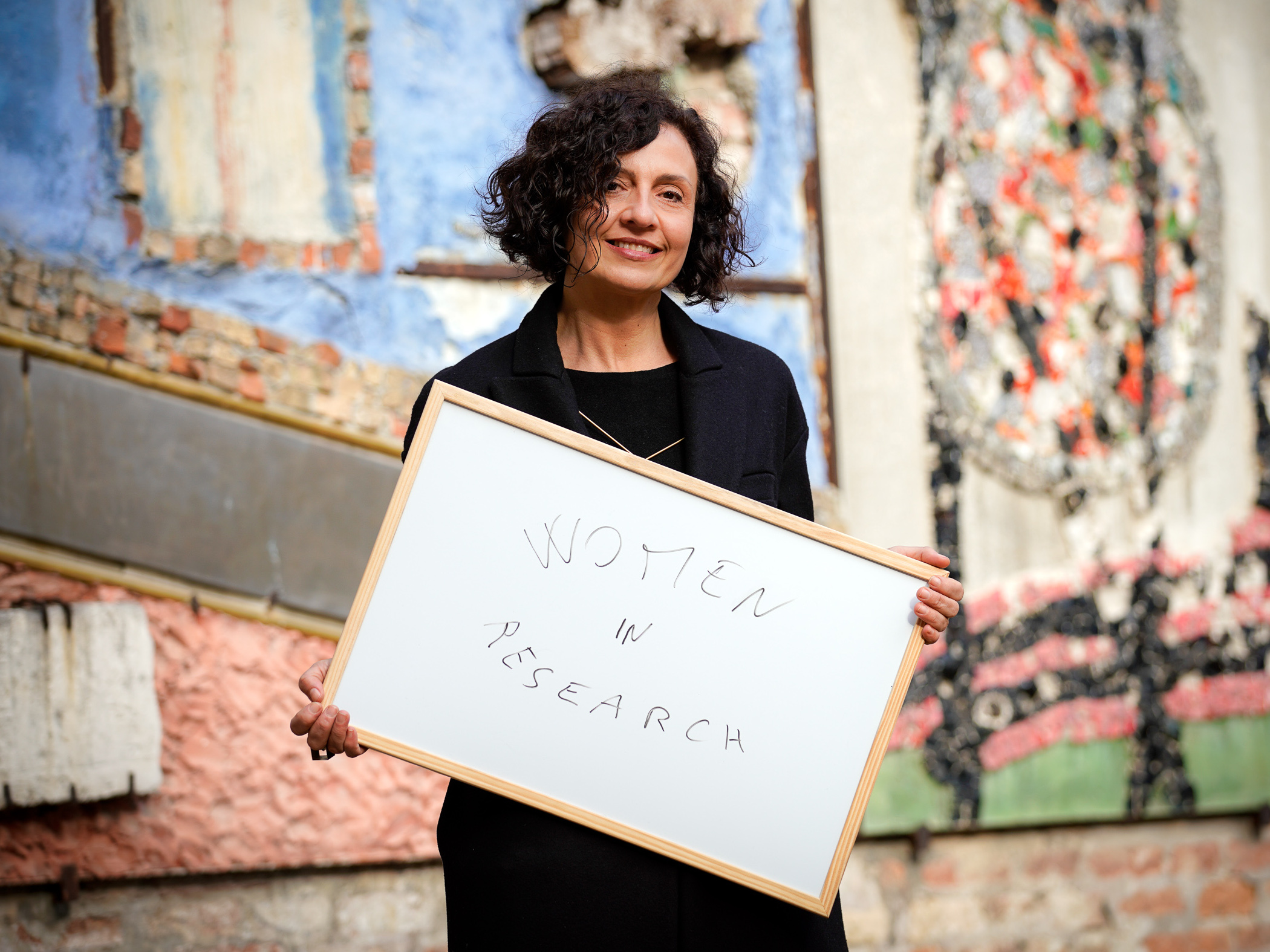Susanne Franco is a researcher and professor of History of Dance and History of Theatre and Performing Arts at Ca’ Foscari, and is part of the research team, “Creative Arts, Cultural Heritage and Digital Humanities”. Her primary interests and publications focus on the history of dance and the performing arts, the methodology of dance research, the history of the body, and culture of theatre in France, Germany and the US. Her innovative and interdisciplinary studies have taken on many research roles in Italy and abroad, particularly in France.
How did your interest in dance and theatre develop?
I began studying dance and acting in order to become an actress and when I got in the Accademia d’Arte Drammatica in Rome I realized that I missed studying. I enroled at the university and aimed at an academic year later, and even now when I introduce myself and say what I am currently teaching I am almost always asked if I used to dance. It is important to highlight that a practical training may be precious but is not required to be a dance or theatre historian.
I have always been interested in the history of dance, even though I did not attend courses on the topic because they were offered in a single university in all Italy at the time. When I became a PhD candidate in performing arts in 1997 with a project focusing on the history of dance, I understood that it was important for me to study in the United States where they have long explored the topic. At the University of California, Santa Cruz, I mainly attended courses within the Division of the Arts and “History of Consciousness” that had an incredibly groundbreaking approach in an inspiring time for those who studied culture and arts.
I discovered gender studies and postcolonial studies, as well as innovative historiographic and anthropological approaches and most of all I was lucky enough to study with one of the most respected dance scholars. This experience drastically changed my perception of dance studies and was essential for me to develop my research. I am now happy to teach these topics and especially history of dance that is still hardly offered in Italy. Ca’ Foscari is indeed one of the only Italian universities with such a course that will be included at a Master’s degree level next year.
What do you focus your research on?
One of my main interests is research methodology, in particular the relationship between history and memory. Dance offers a very interesting perspective on the role of individual and collective memories (including what has been forgotten or rejected), body archives and incorporation processes.
This research fights against the idea that dance is ephemeral per se, vanishing at the same moment it is on stage. Dance does leave traces, only in a different way. Consequently, this research requires new tools and new methodological and theoretical perspectives. Studying dance through memory includes neuroscience, cognitive science and psychoanalysis. Bearing in mind how relevant it is to associate memory and dance, for instance by questioning the expected linearity and uniqueness of transmission from teacher to student because of their institutional quality.
On the contrary a practical and theoretical knowledge like dancing is inherently difficult to grasp or censor, and often seem to disappear and reappear in historical moments that are difficult to define. Studies giving priority to documents that were not accessible until recently for traditional historians - mainly the body and its movements - enable to retrace and enhance dance heritage as indirect heritage and a form of resistance against their teachers’ education. Overall, a dynamic picture of dance with many links between dance and other cultural fields emerges.
The world of dance, theatre and choreography seems far from that of academics. How do these two universes connect?
When teaching history of theater it is easier to refer to the education students had in high school and to their cultural background, but for history of dance the matter is more complicated because it is not taught in school. Its history is therefore little know by those who attend dance classes. In Italy the investment is clearly weaker than in the past and in other countries for a lack of dance tradition which translated into a massive reduction of the audience, often more intimidated than curious with respect to an expression that feels increasingly distant to them. Finally, many stereotypes are associated with dance and they often become barriers, especially for contemporary dance. Giving basic knowledge both at the university and elsewhere is a stimulating and difficult challenge.
Are there projects that you are particularly close to your heart as of present?
One of the most interesting trend is how history of dance is currently being staged by artists themselves. They feel like they must face their heritage, be it a dance tradition, a technique or repertoire. They feel the need to reenact famous historical pieces including original solutions that play out their own personality, memories and personal experiences.
The clear intent is to give life anew to repertoire in order to share them with the audience today. Many experiences take place in museums or art galleries, sometimes interacting with the art pieces in display. In this manner dance intertwines its views with other art forms and artists can share a story and a culture with those who are not familiar with it. Dance proves itself to be an efficient tool to get visitors to discover visual art in unexpected ways. Its great potential should be taken into account to develop new museum strategies.
Do you think that in Italy male and female researchers have the same opportunities? Are they treated the same and are their career opportunities the same?
My field has always been rather gender balanced and career opportunities may be limited by generational changeover, that is one of the main issues of Italian universities.
What is the relationship between dance and gender studies?
Dance is an art of the body and for this reason dancers are privileged observers. Dance actively participates to constructing, representing and perceiving gender identities, questioning and weakening the system of values, habits and customs of a given society.
Studying dance sheds light on the dynamic relations between men and women, how social and cultural inheritance emerge and on collective imagination. If we knew the historical origin of hindering and long lasting stereotypes it would be easier to fight against them. For instance the idea that dance is reserved only for women and would be used by men to cope with their alleged homosexuality. This perception of effeminate male dancers was supported by a vision of a body that would be mannered and therefore not masculine.
Under the Reign of Louis the 14th, the founder of the Académie Royale de Danse and himself an exceptional dancer, the fact that the King would dance and convey an image of power would have never brought into doubts his gender identity. This stereotype is still conditioning how male dancers are largely perceived and in Italy there is a clear regression. Many children may refuse to study dance and renounce their passion for fear of being laughed at. In the “Muoviti! Muoviti! Danza musica performance” workshop I take care of at Palazzo Grassi, I asked for a gender ratio guaranteeing as many male and female students. It is a way to send a message so that our country as well may soon turn the ship around.
Teresa Trallori











